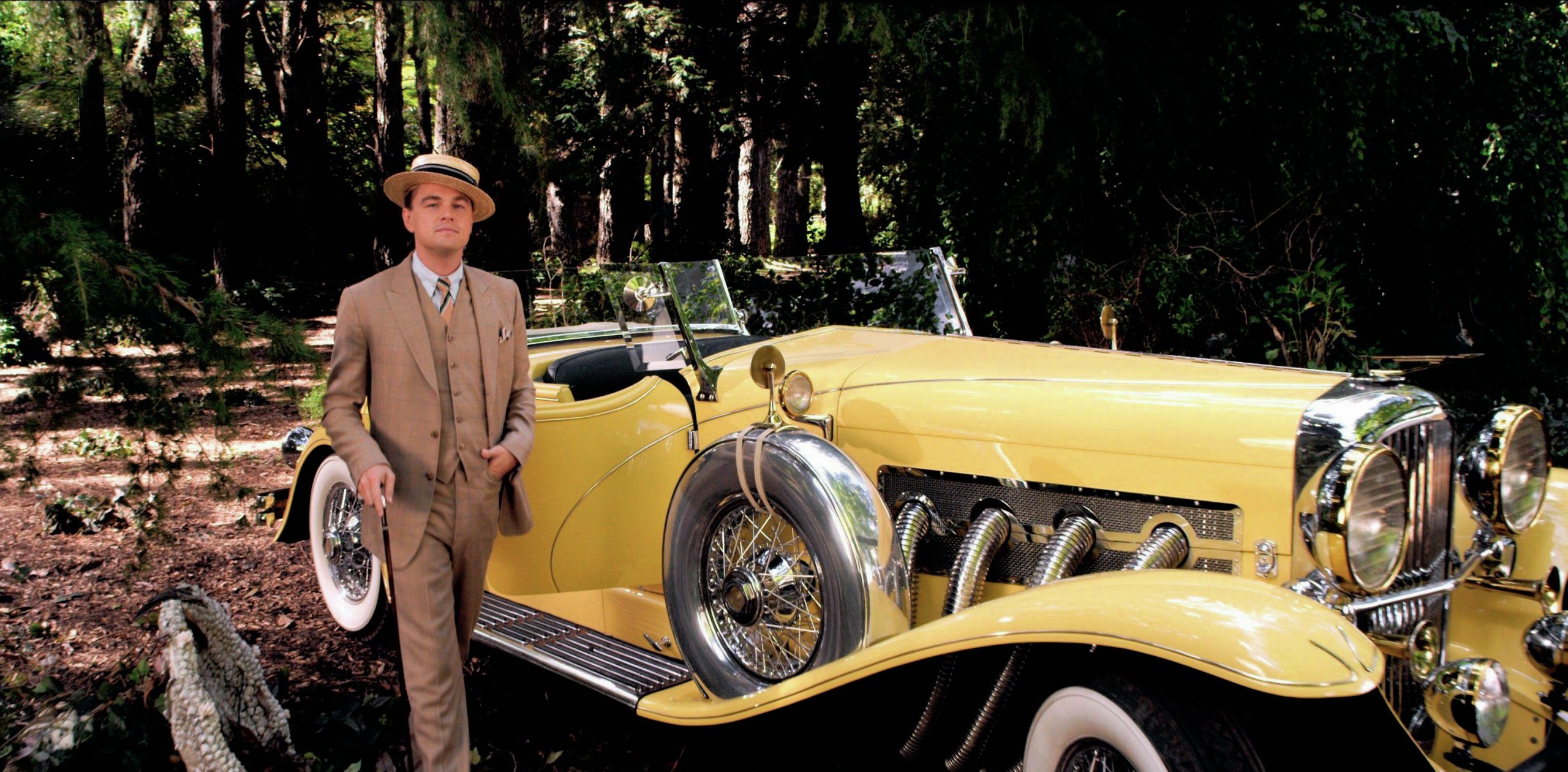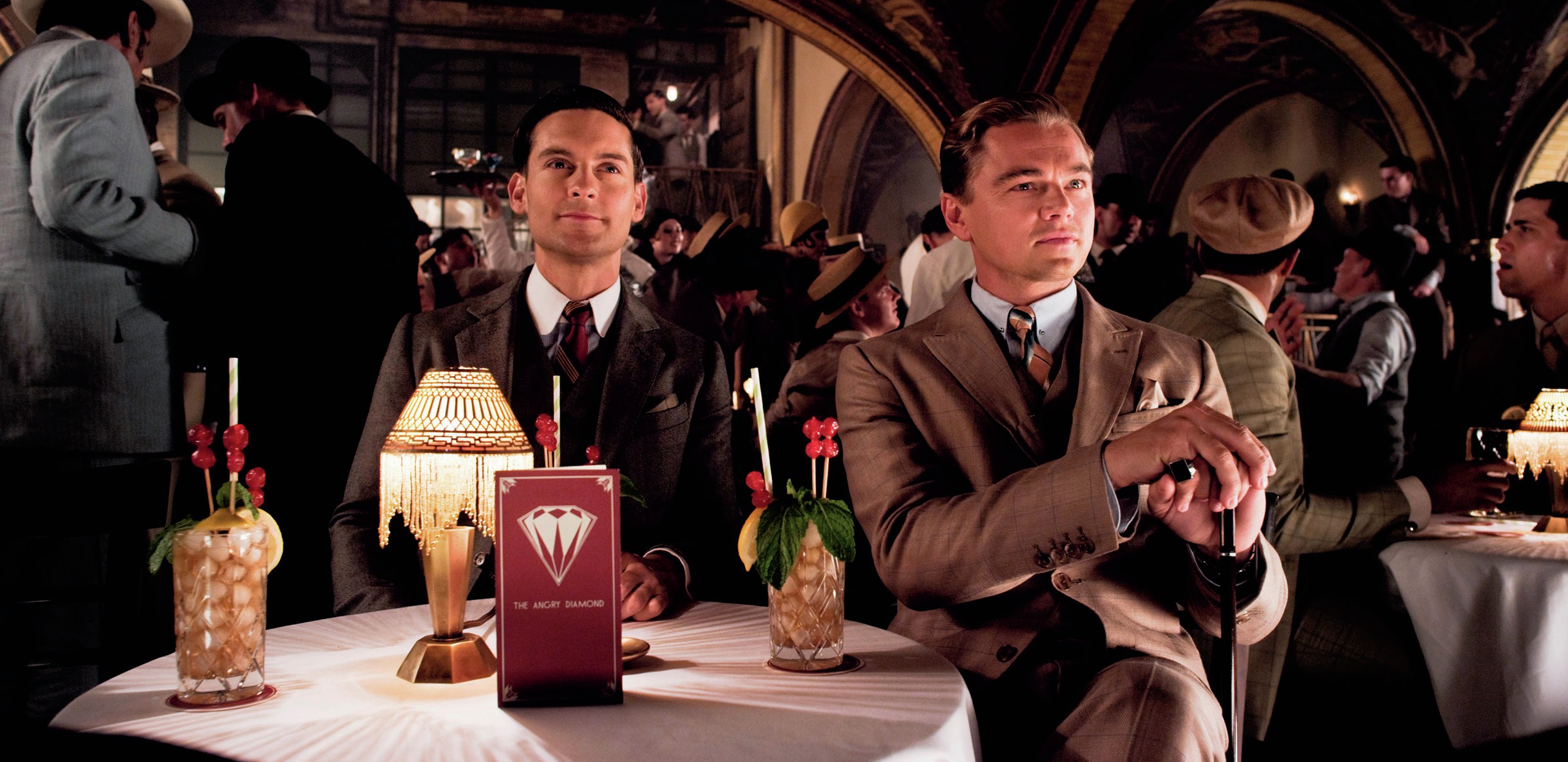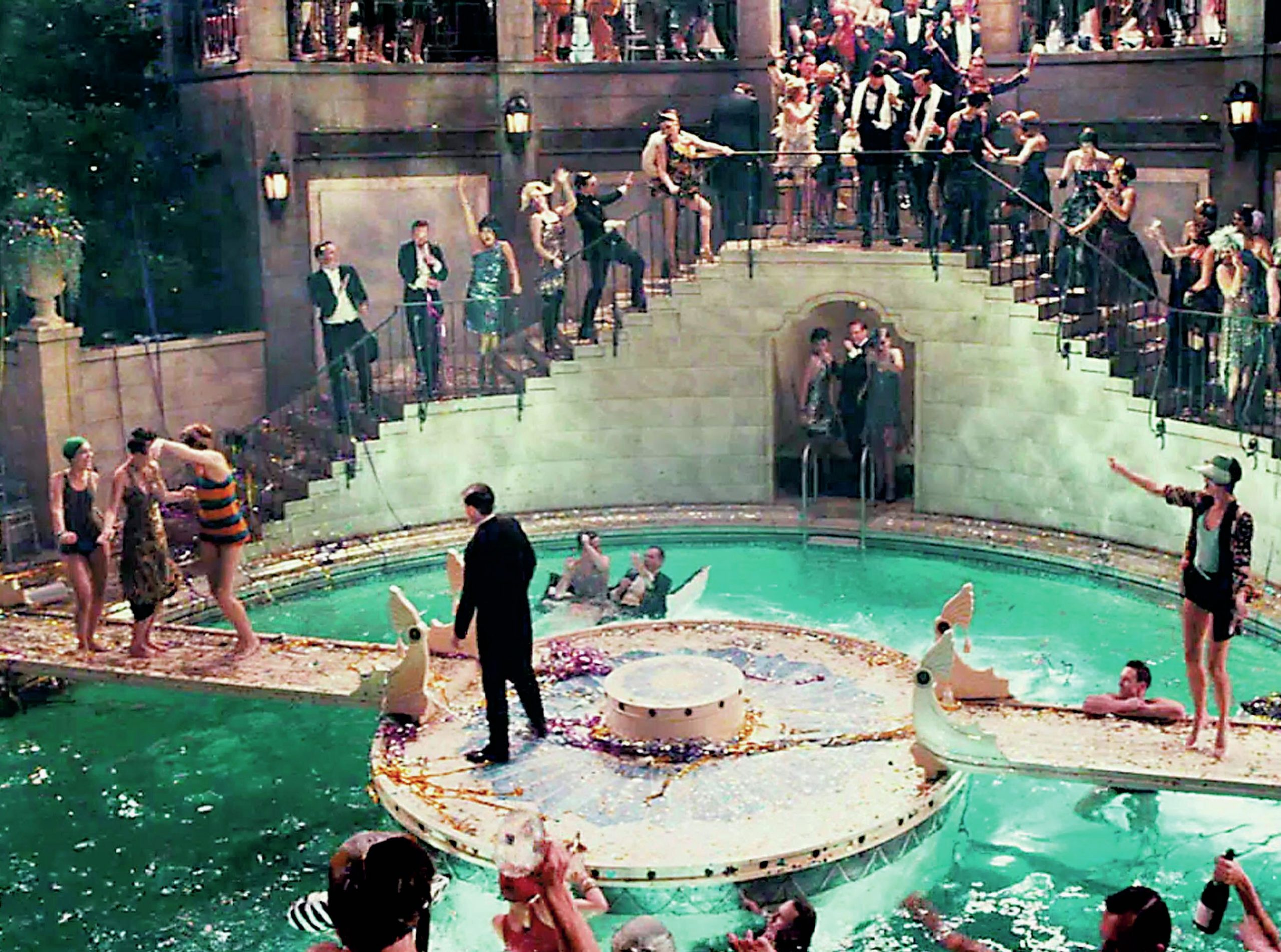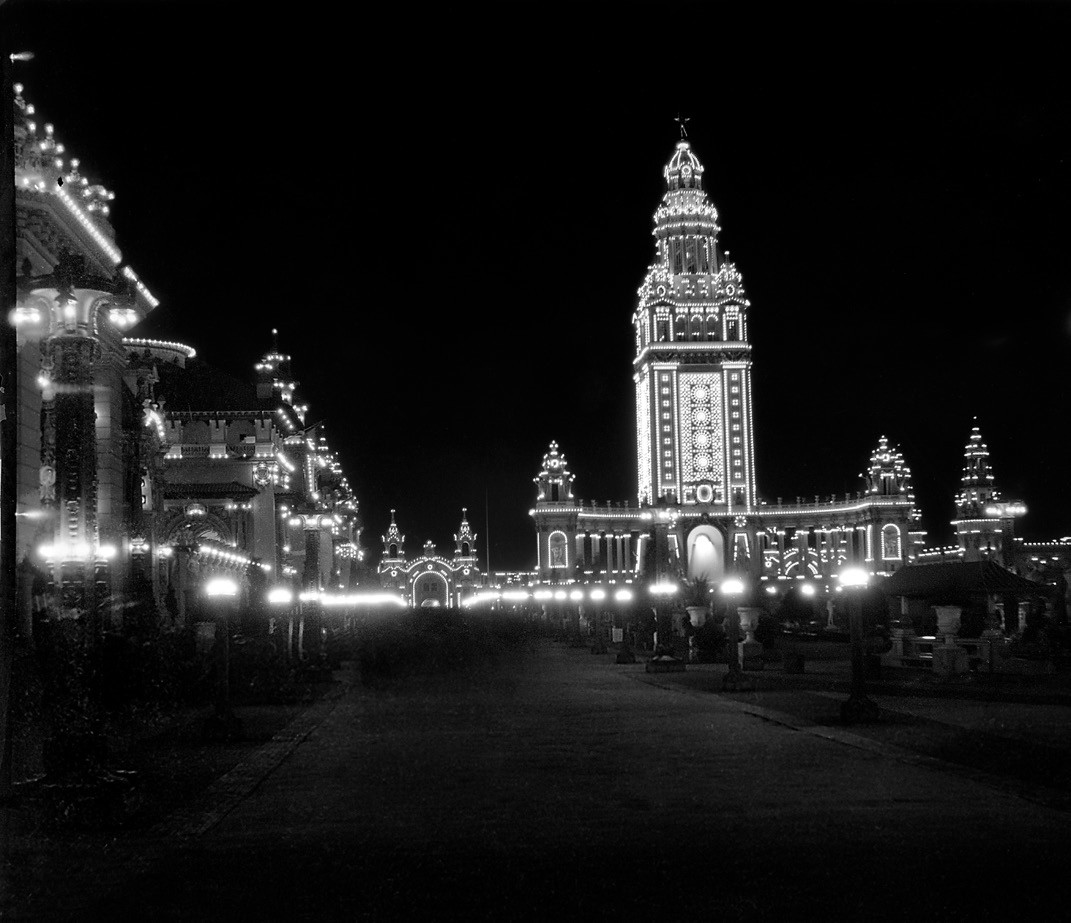The Great Gatsby
Cars, crimes and carnivals
Philip McGowan considers the themes of fantasy, technology and politics in F. Scott Fitzgerald’s famous novel

Exam links
AQA (A): Paper 1 Love through the ages
AQA (B): Paper 1 Tragedy
OCR: Paper 2 American literature 1880–1940
As he was finalising drafts of The Great Gatsby in the summer of 1924, F. Scott Fitzgerald wrote to his editor Maxwell Perkins, ‘I think my novel is the best American novel ever written.’ That said, when it was published on 10 April 1925, it received fairly mixed reviews and sales were sluggish for this, Fitzgerald’s third, novel. It certainly did not compete with his debut novel, This Side of Paradise (1920), which had been an instant hit, selling out its first print run of 3000 copies in three days. But time has proved that Gatsby outshines all of Fitzgerald’s other works; every year, it outsells all his other novels combined. So, what explains its enduring success and what is there still to be said of this era-defining work?
Making Gatsby great all over again
Each generation rediscovers reasons why The Great Gatsby is, well, great. And yet all the evidence in the novel points to anything but Gatsby’s greatness: he probably has killed a man, or at least had a few killed given his line of work is bootlegging, and he is extensively involved with criminal types. He also does all that he can to break up a marriage. But the novel asks us to look elsewhere, directing our attention to the ideal that Gatsby tries to make real through his pursuit of Daisy. As a result, it poses a different set of questions: it is not that Gatsby is great necessarily, but why does Nick Carraway see him as great? What explains Nick’s need to hero worship Gatsby, to see him as great?
The love story of Daisy and Gatsby, in many ways, is a subtext within the novel. This is a book that has come to be read as a love song to America in the middle of the 1920s. The Daisy–Gatsby storyline is a pretext that allows Nick Carraway to rediscover his love for America. It is Nick who is fated to be ‘unutterably aware of [his] identity with this country for one strange hour’ and the last chapter of the book connects Gatsby’s failed, impossible, impractical dream with ‘the dark fields of the republic [that] rolled on under the night’. Carraway, as his account of Gatsby opens, recalls his restlessness on his return from the war in Europe: he actively seeks a reason, an inspiration, a dream to believe in once again. What he finds and places his faith in is Gatsby — ‘who represented everything for which I have an unaffected scorn’ (Ch. 1) — because Gatsby is indelibly linked to the experiment that is America, the timeless urge to achieve an ideal that may never be accomplished.
In light of this tension between dream and reality, just what is the America of this book?
Technology and commodities
‘[T]o see in 1925 is to see through the stencil of the commodity’ (Godden 1990, p. 78). In one sentence Richard Godden unlocks much of what is going on in the America of The Great Gatsby. The technological advances of the postwar boom years are everywhere in evidence in Gatsby’s house, which doubles as a kind of showroom for modernity: ‘There was a machine in the kitchen which could extract the juice of two hundred oranges in half an hour if a little button was pressed two hundred times by a butler’s thumb’ (Ch. 3). The new decade after the war would be defined as one marked by the rise of commodity culture, and Gatsby’s house is decked out with the latest gadgetry and technology. Gatsby equates success and progress with the visual display of his wealth, however that has been acquired, and all of it is accumulated for one purpose: to regain Daisy.
Gatsby is a reboot of the generation that had gone before him. As a bootlegger, for instance, it is fitting that he lives in a house previously owned by a brewer (a maker and supplier of beer). Indeed, Gatsby himself is a rebooted version of James Gatz, the 17-year-old youth whose life is transformed in the instant he catches sight of Dan Cody’s yacht:
It was James Gatz who had been loafing along the beach that afternoon in a torn green jersey and pair of canvas pants, but it was Jay Gatsby who borrowed a rowboat, pulled out to the Tuolomee, and informed Cody that a wind might catch him and break him up in half an hour.
(Ch. 6)

Cody’s yacht signifies multiple possibilities for this 17-year-old American: mobility, adventure and acquisitiveness. Much of Gatsby’s story is connected to social and also physical mobility, both fuelled by wealth and the material things it can provide.
Amusement parks and fairs
At the start of Chapter 5, Nick remarks that his neighbour’s house, ablaze with light at two o’clock in the morning, ‘looks like the World’s Fair’. There is more contained within this apparently throwaway comment than first meets the eye. World’s Fairs were major international events that ran for up to ten months of the year in a host city. They were an opportunity to showcase the latest technological and scientific advances of the age as well as providing attractions such as Ferris wheels and sideshows that we would associate with amusement parks. Indeed, it is significant in Chapter 3 that Gatsby’s partygoers conduct themselves ‘according to the rules of behaviour associated with an amusement park’. Also, it is Gatsby himself who suggests to Nick that the two of them take a trip to Coney Island, a tourist destination in Brooklyn where amusement parks have flourished since the last decades of the 1800s. The fantastical is never far away from the main action of The Great Gatsby.
Dream cars and death cars
One of the main fantasy spectacles of the novel is Gatsby’s car. ‘Everybody had seen it,’ reports Nick (Ch. 4) — though possibly not the Long Island and New York police departments: Gatsby’s car ‘[w]ith fenders spread like wings we scattered light through half Astoria’ is briefly pulled over in the same chapter by a motorcycle cop. Later, following the accident that kills Myrtle Wilson, Gatsby conceals the ‘death car’ in his garage (Ch. 7). The car is one of the central visions of the summer, the conspicuous vehicle of Gatsby’s new-found mobility. It figuratively represents the constant movement and restlessness Carraway recognises in Gatsby and the fantasy world that he has constructed: ‘On weekends his Rolls-Royce became an omnibus, bearing parties to and from the city between nine in the morning and long past midnight, while his station wagon scampered like a brisk yellow bug to meet all trains’ (Ch. 3).

Such constant motion to and from the ‘World’s Fair’ of his house mirrors Gatsby’s own seeming imitation of a constant motion machine: ‘He was never quite still; there was always a tapping foot somewhere or the impatient opening and closing of a hand’ (Ch. 4). Perhaps it is this restlessness that Nick identifies with, that draws him into the dream worlds of Gatsby’s mind. In comparison, however, Nick is an altogether safer driver than the other main characters combined.
On a second or third reading, it is interesting how so much of the action of the novel can be mapped by cars: who drives them; who wants them; who crashes them; who uses them to trade social as well as economic status; who is looking for that elusive safe driver. Cars in The Great Gatsby are more than simply modes of transportation: they are also portents of the tragedy that will befall Myrtle Wilson in Chapter 7. From the cars driving round Chicago with, according to Nick in Chapter 1, their ‘left rear wheel painted black as a mourning wreath’ because of Daisy’s absence, to ‘the dust-covered wreck of a Ford which crouched in a dim corner’ of Wilson’s garage in Chapter 2, cars are implicated within the novel’s narratives of possibility and tragedy. Cars are also modes of desire: they provide visible proof of social mobility in the novel.
Big crimes, no punishment
For a novel that readers regularly refer to as one of their favourite books and which is essentially a love story, The Great Gatsby has a high body count. Myrtle, Gatsby and George Wilson all die violently. Each of their deaths is good news for Tom of course, who, within a couple of days, loses a troublesome mistress, his wife’s lover and his mistress’s annoying husband — and with no discernible negative outcome for him. Judgement may come in the form of Nick’s scorn, but there is no larger system of justice or legal punishment at work in the novel. Criminality is rife: the police commissioner is a friend of Gatsby’s and state senators mingle with other partygoers at the height of national Prohibition. Illegal activities carry little, if any, judicial consequences; law enforcement is negligible at best, the motorcycle cop’s momentary intervention notwithstanding.
What criminality does occur in the book takes place off-screen as it were. We never quite know what the phone calls from Philadelphia or from shady characters such as Slagle are about, but they speak of a zone elsewhere beyond the law where things happen that probably shouldn’t. It is also important to register the importance of the telephone in the novel: whether it is its intrusiveness, pulsing early in the novel with the spectre of sexual infidelity in Tom and Daisy’s house, or as a technology registering only disconnections as Nick attempts to coax people to attend Gatsby’s funeral.
The refusal of former associates to ‘get mixed up’ in the aftermath of Gatsby’s murder, as Meyer Wolfshiem puts it in Chapter 9, emphasises the book’s separation of the world of criminality from the ideal of Gatsby’s dream. In many ways, Nick cannot really complain about this as it is he who has the most vested interest in holding Gatsby up as ‘worth the whole damn bunch put together’ (Ch. 8). Carraway’s narration of the novel is a masterpiece of caution and allegiance: perhaps those college accusations of him being a politician were not quite that unjust after all.
Back to the fair
All this talk of crime and technology connects with a real-life event in American history with which a very young Fitzgerald would have been familiar. Indeed, only a matter of weeks prevented him and his family from being present at this particular incident that took place during the Buffalo World’s Fair of 1901. Officially designated the ‘Pan-American Exposition’, this, the first World’s Fair of the twentieth century, earned the more marketable tag of the ‘Rainbow City’ because of the many electric light displays that dominated its showgrounds. The centrepiece was the Electric Tower exhibit, a construction of two million lightbulbs that, when illuminated, could be seen from 50 miles away. Between May and November 1901, eight million people visited the Buffalo Fair. In August, the Fitzgeralds went too, a month short of young Fitzgerald’s sixth birthday.
The spectacular multicoloured realm of the Buffalo Fair would certainly have appealed to a young boy with a creative imagination. Fast-forwarding to The Great Gatsby and Nick’s apparently throwaway comment about Gatsby’s house looking ‘like the World’s Fair’, it does not take a huge amount of lateral thinking to see a recessed and subtle reference to the Buffalo Fair. Chapter 3 of the novel details the fortnightly ‘corps of caterers who came down with several hundred feet of canvas and enough coloured lights to make a Christmas tree of Gatsby’s enormous garden’ — Gatsby is creating a miniature Rainbow City all his own.
Mayhem
That said, it was to be another event at that particular World’s Fair that would secure its place in American political history. On 6 September 1901, the American president, William McKinley, was shot while visiting the Buffalo Fair, dying of his wounds eight days later. Theodore Roosevelt, McKinley’s vice president, was sworn in as the 26th president at the Fair’s showgrounds.
McKinley’s assassin was a former mill worker, Leon Czolgosz, who was tried as an anarchist and sentenced to death for the murder. Czolgosz would die in the electric chair on 29 October 1901. The Buffalo Fair, perhaps unsurprisingly, ended in mayhem: a hastily arranged Buffalo Day on 1 November that was intended to counter the bad publicity surrounding McKinley’s death turned into a mob riot, with widespread looting and vandalism of the fairgrounds.

A disaffected member of the working class, Czolgosz’s appearance at the Rainbow City was not as anomalous as George Wilson’s appearance in Gatsby’s gardens would be in Fitzgerald’s novel 24 years later. But the similarities are there: a working-class assassin and a murder, all within the showgrounds of a ‘World’s Fair’. One would mean a changing of the political guard in Washington; the other is left to the ‘politician’ Nick Carraway to distil the history of another riotous American summer.
Questions
1 How significant is the role played by technology in The Great Gatsby?
2 How does The Great Gatsby redefine the concept of love in the early twentieth century?
RESOURCES
Bragg, M. (2021) ‘The Great Gatsby’, In Our Time, BBC Radio 4 (14 January): https://tinyurl.com/yt7e8zte
Churchwell, S. (2013) Careless People: Murder, Mayhem and the Invention of The Great Gatsby, Virago.
Godden, R. (1990) Fictions of Capital: The American Novel from James to Mailer, Cambridge University Press.
Mangum, B. (ed.) (2013) F. Scott Fitzgerald in Context, Cambridge University Press.
McGowan, P. (2010) ‘The American Carnival of The Great Gatsby’, in H. Bloom (ed.) F. Scott Fitzgerald’s The Great Gatsby, pp.145–56, Chelsea House Modern Critical Interpretations.
Mosher, J. (1926) ‘F. Scott Fitzgerald: That Sad Young Man’, The New Yorker: https://tinyurl.com/yayjmur3





